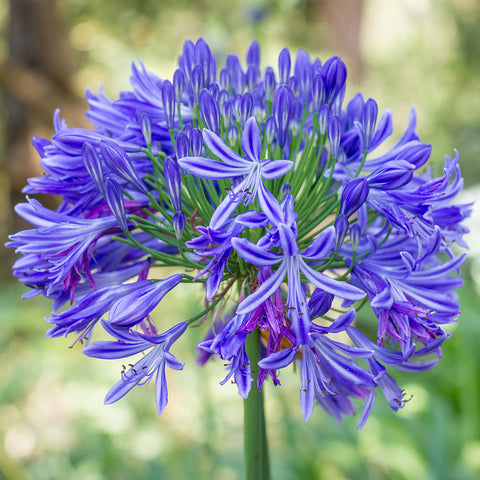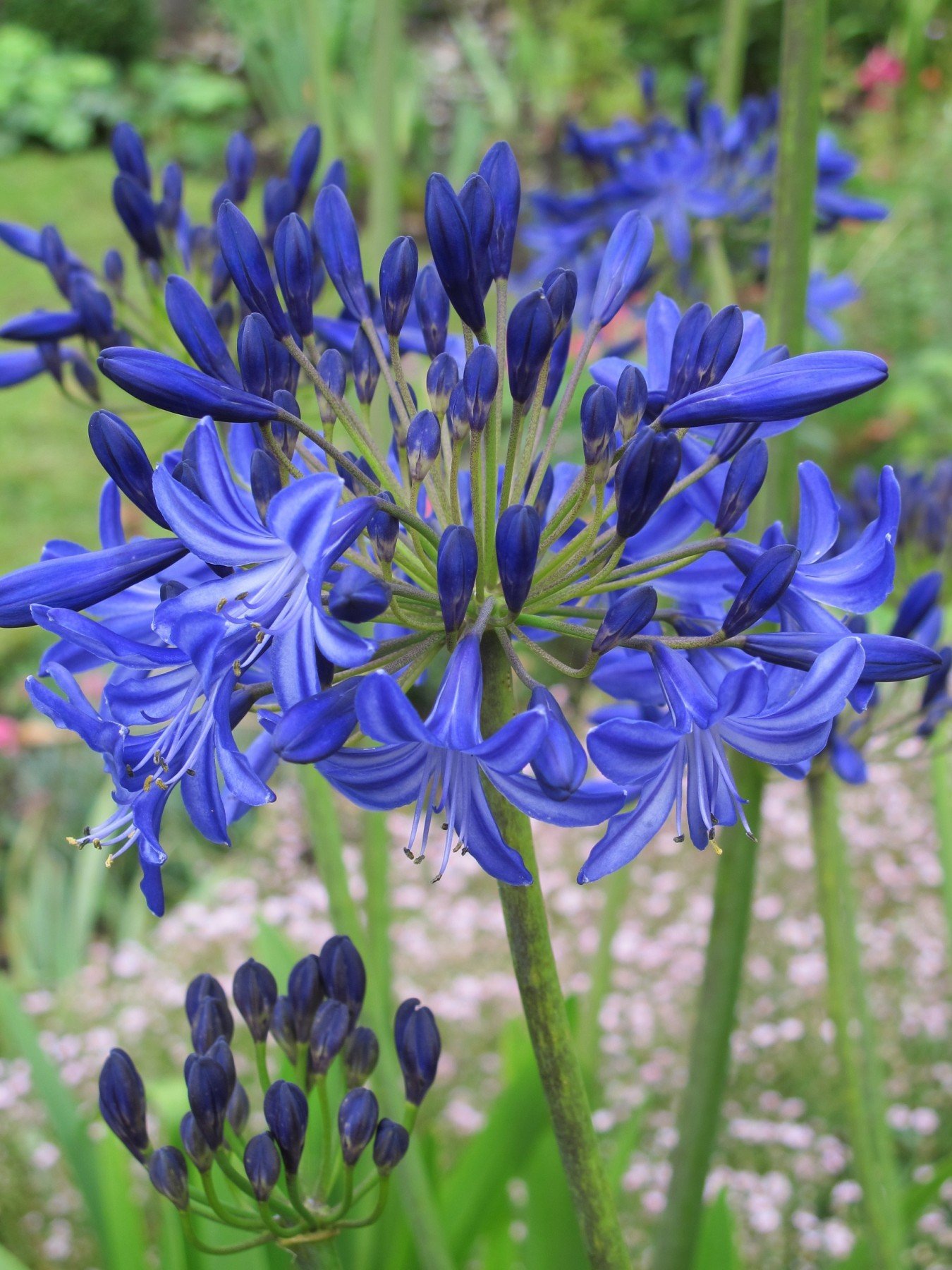Seasonal Agapanthus Care: Planning For Winter Months and Summertime
Wiki Article
Letting Loose the Secret to Successful Agapanthus Farming: Tips and Tricks for a Flourishing Garden
In the realm of gardening, growing agapanthus successfully needs a calculated approach that includes numerous elements of plant care. By comprehending the subtleties of agapanthus farming, one can create an environment where these plants flourish and flower generously.Planting Agapanthus: Finest Practices
When planting Agapanthus, appropriate dirt prep work is important for ensuring successful growth and advancement of these attractive blossoms. Agapanthus, commonly referred to as Lily of the Nile or African lily, flourishes in well-draining dirt with a somewhat acidic to neutral pH degree - Agapanthus. Prior to growing, it is critical to modify hefty clay dirts with raw material such as compost or peat moss to enhance water drainage and give essential nutrients for the plantsTo plant Agapanthus, pick a location that receives full sunlight to partial shade, as this will promote healthy growth and abundant blooming. Dig an opening two times the size of the plant's origin ball and place the Agapanthus at the exact same depth it was previously growing. Gently backfill the hole with soil, weighing down firmly to remove any air pockets around the origins.
Water the recently planted Agapanthus completely and remain to maintain the dirt uniformly damp, particularly during the plant's energetic expanding period. Agapanthus. Applying a balanced plant food once a month can better sustain the plant's development and blooming. By complying with these ideal methods for planting Agapanthus, you can create a stunning display screen of these exciting blossoms in your garden
Ideal Dirt Issues for Agapanthus
For optimal development and blooming success of Agapanthus plants, making certain the soil problems are optimal is essential. Agapanthus prefers soil that is abundant in nutrients, so incorporating a well balanced plant food throughout the growing period can promote healthy development and dynamic blossoms.
Watering and Feeding Tips
To ensure healthy and balanced development and lively blossoms, correct watering and feeding methods are crucial for effective Agapanthus farming. Agapanthus plants gain from routine watering, particularly during the growing season. It is recommended to water deeply once a week, guaranteeing the dirt is damp yet not saturated. Throughout heat or in pots, more frequent watering might be necessary look at here now to avoid the dirt from drying entirely.When it comes to feeding Agapanthus, a well balanced fertilizer with equal components nitrogen, phosphorus, and potassium can be used in the spring to promote healthy growth and blooming. Slow-release plant foods are optimal for offering nutrients gradually over an extensive period. Avoid over-fertilizing, as this can cause extreme foliage development at the cost of blooms.
Additionally, including raw material like compost right into the soil can boost nutrient levels and enhance soil framework, helping in the overall health and wellness of the Agapanthus plants. By following these watering and feeding tips, garden enthusiasts can ensure their Agapanthus plants flourish and generate sensational screens of blossoms.
Pruning and Deadheading Methods
Proper pruning and deadheading strategies play an important duty in preserving the wellness and looks of Agapanthus plants, matching the essential methods of watering and fertilizing for successful farming. Pruning Agapanthus entails eliminating invested flower heads, dead or yellowing leaves, and general shaping of the plant to advertise better development. Deadheading, the process of eliminating discolored flowers, not only enhances the plant's appearance yet additionally encourages additional growing.When deadheading Agapanthus, it is advisable to clip off the blossom stem at the base using sharp, tidy shears. This procedure redirects the plant's energy from seed manufacturing back click site into root and foliage development, promoting a much healthier and more durable plant. Normal deadheading can expand the growing period of Agapanthus and stop self-seeding, which can bring about overcrowding.
In regards to trimming, Agapanthus generally take advantage of a light trim after flowering to tidy up the plant and encourage fresh growth. Reducing back the invested flower stems and removing any type of damaged or dead foliage assists keep the plant's vitality and overall appearance. Nevertheless, it is important to avoid cutting into the crown of the plant, as this can compromise its wellness.

Protecting Agapanthus From Vermins and Diseases
Carrying out effective pest and condition management methods is essential to securing the health and wellness and vitality of Agapanthus plants in farming. One typical pest that influences Agapanthus is the Agapanthus borer, a caterpillar that tunnels right into the plant, causing damages to the fallen leaves and flowers.Along with parasites, Agapanthus are vulnerable to conditions such as origin rot and fungal fallen leave spots. These issues can typically be protected against by guaranteeing correct water drainage and avoiding overwatering. If indications of condition appear, impacted components of the plant need to be quickly eliminated to avoid additional spread. Fungicides might likewise be made use of as a therapy action, following the producer's directions meticulously. By staying cautious and dealing with parasite and disease problems without delay, gardeners can assist their Agapanthus prosper and thrive.

Conclusion
In verdict, effective farming of agapanthus calls for correct growing strategies, suitable soil problems, appropriate watering and fertilizing, routine trimming and deadheading, and security from conditions and bugs. By adhering to these pointers and methods, garden enthusiasts can make sure a growing yard loaded with stunning agapanthus flowers. Agapanthus. Keep in mind to preserve consistent treatment and attention to detail to advertise the health and longevity of these magnificent plantsWhen growing Agapanthus, appropriate soil preparation is essential for ensuring successful development and growth of these stunning blossoms.Water the newly planted Agapanthus extensively and proceed to keep the find out soil uniformly damp, especially throughout the plant's energetic growing period.For optimum growth and blooming success of Agapanthus plants, making certain the dirt conditions are ideal is crucial. When growing or transplanting Agapanthus, make sure the dirt is well-prepared to provide the required foundation for the plants to develop themselves successfully. One usual insect that affects Agapanthus is the Agapanthus borer, a caterpillar that passages into the plant, creating damage to the blossoms and fallen leaves.
Report this wiki page